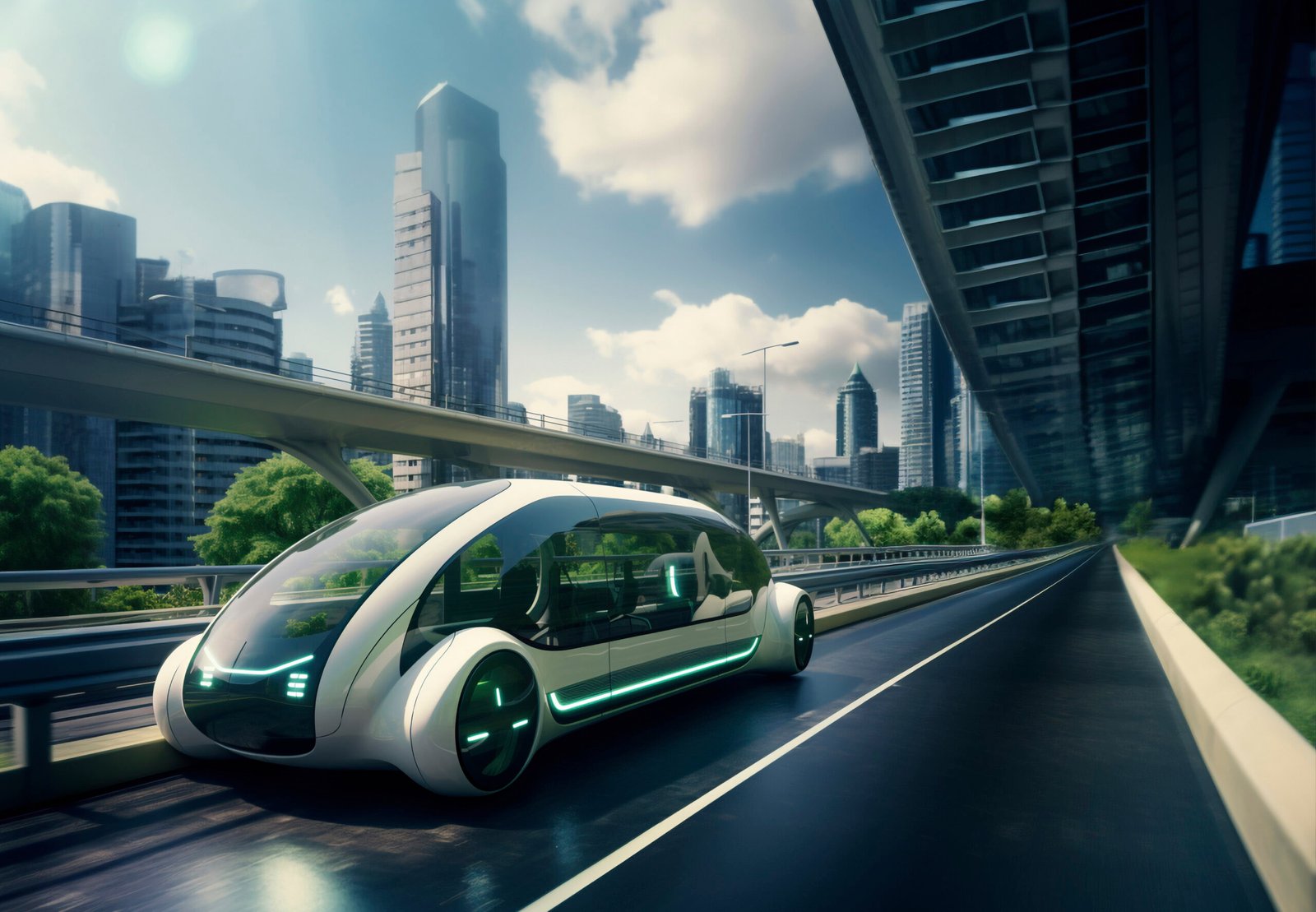Self-driving technology has rapidly advanced in recent years, transforming the way we think about transportation. Autonomous vehicles promise safer, more efficient travel by using artificial intelligence, sensors, and advanced navigation systems. Among the companies leading the charge in autonomous vehicle technology are Tesla, Waymo, and General Motors. Each of these companies has taken a unique approach to self-driving technology, leveraging their strengths to push the boundaries of what autonomous vehicles can achieve. This article explores how Tesla, Waymo, and General Motors are shaping the future of autonomous driving, along with the technological innovations that set them apart.
Understanding Autonomous Vehicle Technology
Autonomous vehicles use a blend of sensors, cameras, radar, and artificial intelligence (AI) to perceive their surroundings, make decisions, and drive with little to no human intervention. The Society of Automotive Engineers (SAE) defines six levels of driving automation, ranging from Level 0 (no automation) to Level 5 (full automation). The industry is currently developing and testing technology between Level 2 (partial automation) and Level 4 (high automation).
Key components in autonomous vehicle technology include:
- Sensors and Cameras: Used to detect objects, lane markings, pedestrians, and other vehicles.
- Lidar and Radar: Provide precise measurements and tracking of nearby objects.
- Artificial Intelligence and Machine Learning: Allow the vehicle to process data, recognize patterns, and make driving decisions.
- Mapping and Navigation Systems: Enable precise localization and route planning.
Let’s dive into how Tesla, Waymo, and General Motors are leveraging these technologies to develop and innovate in the self-driving industry.
1. Tesla: Leading the Charge in Consumer-Friendly Autonomy
Tesla has emerged as a prominent player in the autonomous vehicle market, known for its accessible approach to self-driving technology. Unlike other companies that focus on building fully autonomous vehicles from the ground up, Tesla integrates autonomous driving features into its existing consumer vehicles.
a. Autopilot and Full Self-Driving (FSD) Software
Tesla’s Autopilot is a suite of driver-assist features designed to reduce the driver’s workload by automating specific tasks, primarily on highways. With software updates, Tesla has continuously improved Autopilot’s capabilities, evolving it into a more advanced system called Full Self-Driving (FSD).
- Navigate on Autopilot: FSD allows for highway driving with lane changes, exits, and merges without driver input.
- Autosteer and Traffic-Aware Cruise Control: Autopilot enables the vehicle to steer, accelerate, and brake for other vehicles or pedestrians.
- City Street Driving (Beta): With FSD beta, Tesla vehicles can recognize traffic signals, stop signs, and other city street obstacles.
b. Vision-Based Approach
Tesla’s approach to autonomy is unique in that it relies heavily on a vision-based system instead of lidar, which is commonly used by other companies.
- Tesla Vision: Using an array of cameras, radar, and AI, Tesla Vision processes images to detect objects and make real-time driving decisions.
- Machine Learning and Neural Networks: Tesla’s AI processes massive amounts of data collected from its fleet to improve self-driving capabilities and refine its algorithms.
c. Over-the-Air Updates
Tesla’s software-based approach allows the company to roll out new features and safety improvements via over-the-air (OTA) updates. This keeps vehicles up-to-date and enables Tesla to continuously enhance its self-driving technology.
2. Waymo: The Pioneer of Fully Autonomous Ridesharing
Waymo, a subsidiary of Alphabet (Google’s parent company), has been at the forefront of autonomous driving for over a decade. Unlike Tesla, which focuses on consumer vehicles, Waymo’s mission is to develop a fully autonomous ride-hailing service.
a. Waymo Driver: A Comprehensive Self-Driving System
Waymo’s self-driving technology, known as Waymo Driver, is designed to operate independently, with the goal of achieving Level 4 and eventually Level 5 automation.
- Sensor Fusion Technology: Waymo Driver uses a combination of lidar, radar, and cameras to create a detailed 360-degree view of its surroundings.
- Advanced AI and Deep Learning: Waymo’s algorithms interpret sensor data to predict the behavior of other road users, allowing the vehicle to make safe, real-time driving decisions.
- High-Definition Mapping: Waymo creates highly detailed maps of the areas in which its vehicles operate, allowing for precise localization and route planning.
b. Waymo One: Autonomous Ride-Hailing Service
Waymo One, the company’s autonomous ride-hailing service, operates in select areas and represents one of the most advanced implementations of self-driving technology in a commercial setting.
- Phoenix Metro Area: Waymo launched its service in Phoenix, Arizona, where users can book rides through a smartphone app in fully autonomous vehicles without safety drivers.
- Expanding Availability: Waymo continues to expand its operations, focusing on making autonomous ride-hailing available in more areas.
c. Waymo Via: Autonomous Delivery Services
In addition to passenger transport, Waymo is exploring autonomous logistics through its Waymo Via program.
- Last-Mile and Freight Solutions: Waymo Via aims to provide autonomous delivery options, from local deliveries to long-haul trucking.
- Partnerships with Logistics Companies: Waymo has partnered with several logistics and delivery companies to test its self-driving trucks, creating new efficiencies in the supply chain.
3. General Motors (GM): Combining Electric and Autonomous Technology with Cruise
General Motors, a leading automaker with a long history, has made significant investments in autonomous driving through its subsidiary, Cruise. With a focus on building a fully autonomous electric vehicle, GM aims to create a safer and more sustainable transportation option.
a. Cruise Origin: A Purpose-Built Autonomous Vehicle
Cruise’s flagship vehicle, the Origin, is designed specifically for autonomous operation, setting it apart from retrofitted self-driving vehicles.
- Electric and Autonomous: The Origin is a fully electric vehicle, built without a steering wheel or pedals, and intended solely for autonomous driving.
- Spacious and Comfortable: The interior is designed to accommodate passengers comfortably, reflecting the vehicle’s focus on shared rides rather than individual ownership.
- Collaboration with Honda: GM partnered with Honda to design and manufacture the Cruise Origin, underscoring its commitment to collaboration in advancing autonomous technology.
b. Comprehensive Sensor Suite
Cruise vehicles are equipped with a comprehensive suite of sensors to ensure safe and reliable navigation.
- Lidar, Radar, and Cameras: Cruise uses multiple sensors to create an accurate representation of the vehicle’s surroundings, even in challenging weather conditions.
- Redundant Systems: Cruise vehicles are designed with redundant braking, steering, and power systems to ensure safety in case of system failures.
c. Fleet-Based Model
Like Waymo, GM’s Cruise is focused on deploying its vehicles in a ridesharing model rather than for individual ownership.
- Cruise Ride-Hailing Service: Cruise plans to launch its autonomous ridesharing service in urban areas, starting with San Francisco.
- Focus on Urban Mobility: Cruise aims to reduce congestion and pollution in cities by providing a sustainable, electric autonomous fleet for shared rides.
The Impact of Autonomous Vehicle Innovation on the Future of Transportation
a. Enhanced Safety
One of the primary goals of autonomous vehicles is to reduce accidents caused by human error. Self-driving technology has the potential to improve road safety by eliminating distractions, fatigue, and impaired driving. Features like Tesla’s Autopilot, Waymo’s advanced AI, and Cruise’s redundant systems highlight how safety is at the forefront of autonomous vehicle development.
b. Environmental Benefits
Electric autonomous vehicles, such as GM’s Cruise Origin, contribute to lower emissions and reduced dependence on fossil fuels. As more companies focus on electric vehicles within the autonomous space, the environmental impact of transportation can be significantly reduced.
c. Increased Accessibility
Autonomous vehicles have the potential to provide transportation solutions for individuals who are unable to drive, such as the elderly and people with disabilities. This could greatly improve accessibility and independence for those who have limited mobility options.
d. The Future of Ridesharing and Logistics
With companies like Waymo and GM focusing on fleet-based autonomous services, ridesharing and logistics are likely to be transformed. These autonomous fleets could reduce costs, improve delivery times, and minimize the environmental impact of last-mile delivery.
Conclusion
Tesla, Waymo, and General Motors are at the forefront of autonomous vehicle technology, each bringing a unique approach to the industry. Tesla is advancing consumer-friendly self-driving features with a focus on affordability and widespread use, while Waymo is pioneering fully autonomous ride-hailing services. General Motors, through Cruise, is combining electric and autonomous technology to create a fleet-based urban mobility solution. As these companies continue to innovate, the future of transportation is set to be safer, more efficient, and more accessible than ever before. With ongoing advancements, autonomous vehicles could soon become a common sight on our roads, reshaping how we move, work, and live.

















